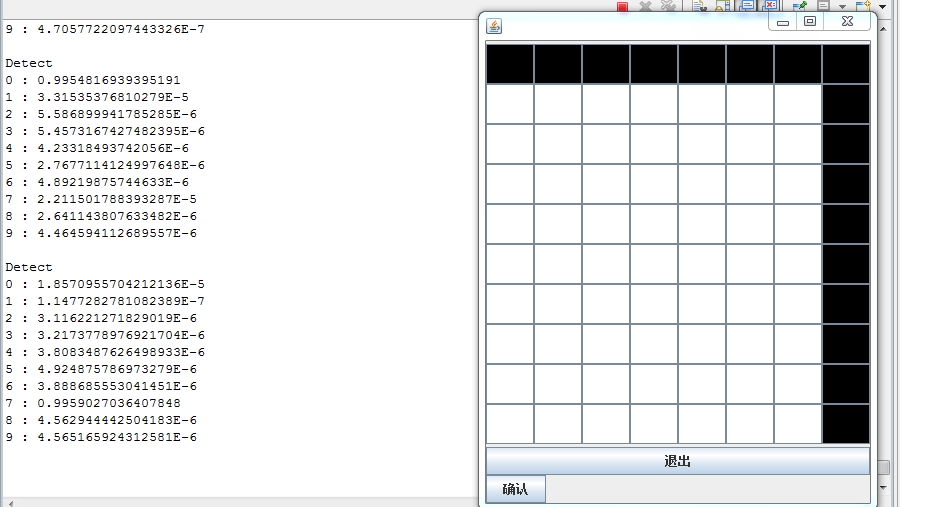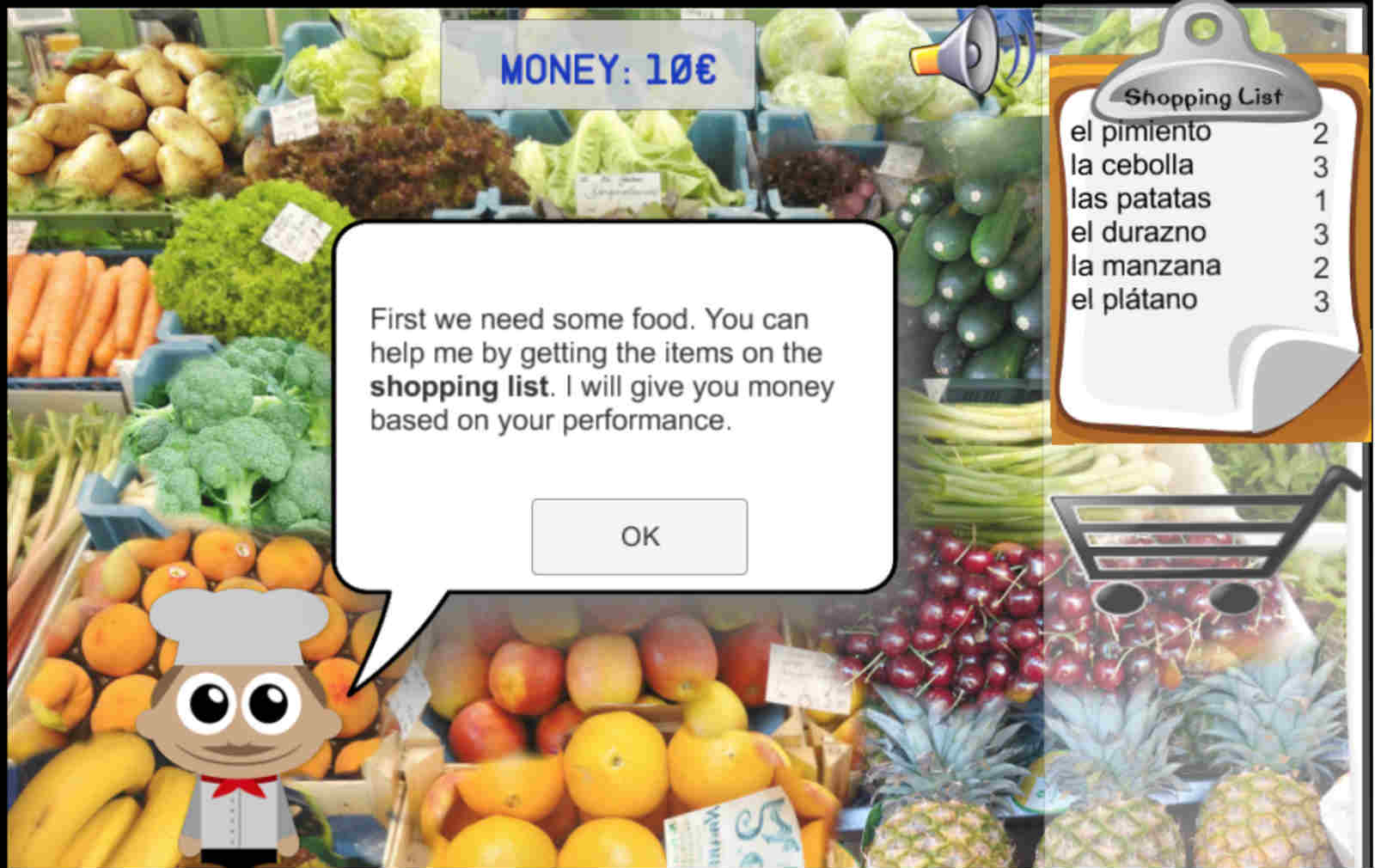Research & Course Projects
Guess It!
2015.1-2015.5
For the Interdisciplinary Game Design Course project, we built a game called Guess It! for learning Spanish words. I work with Maurita Harris (from Psychology Department) and Karen Tharrington (from Education Department).
Guess It! is a Spanish words learning game created by Unity3D game engine. In this game, player can acquire language in a meaningful context, as opposed to the translation-type games that focus on translating words from the L1 (native language) to the L2 (e.g., new language) that are currently available on the market. Guess It! uses the binding theory to help student associate words with images in order to acquire the language in a more natural way. The inter-activeness of the game, with hints and feedback, make it a pedagogically better learning environment than memorizing a static list from a textbook. Our pilot study showed that 11 out of 12 players had an average of 60% positive learning gain in a posttest after playing our game. User experience results showed that players enjoyed learning vocabulary with the game and felt good about it when they played.
In our team, I extended our brainstorming ideas, designed and implemented the game. I am excited about building the game from scratch and working with students from other majors.
Robot Arena
2015.1-2015.5
For the Game AI course project, we built a virtual game to simulate Robot Sumo. I worked with Jianfeng Chen and Yao Lu in this project.
Robot Arena shares the same protagonist as “Robot Sumo”. They should perform as a robot, not a person. Moreover, the objectives for the robots in our project is also pushing component out of stage, or into the specific area. We applied the artificial intelligent techniques (decision tree, state machine, Dirichlet domain, A*, etc) into our virtual game, so that robots can act as smart individuals and as a team with a group strategy. For the individual decision making, we designed a decision tree, the robot can behave properly according to the decision tree. Based on the decision tree, those virtual robots can decide when to attack opponents, eat buff, execute ultimate, or hide in the jungle. For group strategy, we designed a “defense-based strategy". Defense strategy means when one robot in the team is in danger, other robots in the same team should support the weak teammate.
The game was built by Java with Processing API. In our team, I focused on the steering behaviors of virtual robots including attack, hide, evade, wander, detour, trace, etc. I implemented A* algorithm to improve the pathfinding. Besides, I designed the UI for the arena and added audio for the game.
Study Group Finder
2014.10-2014.12
For the HCI course project, we built a group finder system. I worked with Haiyu Yao, Yihuan Dong and Nakul Shukla on this system.
NCSU Group Finder is an interactive web-based service designed to facilitate creation of study groups in the library. Group Finder was implemented by closely following common human-computer interaction (HCI) principles. NCSU Group Finder improves upon existing system like GroupFinder(D.H. Hill library) by increasing the convenience with which users can find and/or create groups, arrange meetings, manage groups and perform other related tasks.
The system is developed by ASP.NET MVC 5, SQL Server, JQuery and Bootstrap. In our team, I focused on the front-end design of the system.

3D Face Reconstruction Based on a Single Image
2013.09-2014.06
I worked as a research assistant in the State Key Laboratory at Chinese Academy of Sciences, working with Dr. Huaiyu Wu on the 3D human face reconstruction project.
In this project, I assisted with the development of 3D faces reconstruction based on a morphable model using Matlab. In the system, the 3D human face can be built from a single 2D image. I use the FACE++ API to get the human face landmark automatically. So the whole reconstructing process can be done automatically. The average reconstructing time is 7s.
The interface is built by Matlab, the 3D face reconstruction process picture on the interface is from Volker Blanz and Thomas Vetter's paper. The example 2D human face image is from Active Appearance Models.

Tiny C Compiler Lexical Analysis and Semantic Analysis
2013.03-2013.07
In the Compiler course project, we built a tiny C compiler using JAVA. I implemented a Lexical Analyser by converting the regular expressions to minimized Deterministic finite automation(DFA) and a Syntax Analyser for LL(1) and LR(0) grammar.

Digit-Recognition Based on Artificial Neural Network
2013.03-2013.06
In the Artificial Intelligence course project, we built simple digital number recognition system. This system is based on Artificial Neural Network. I built a predictor based on a 3-layer feed-forward neural network using the resilient backpropagation algorithm.

Personalized Information Service Based on Web Data Extraction and Analysis
2012.04-2013.04
In this research project, we built a web-based system which helps user extract the data on a website. I worked with Dr.Junxia Guo on this system.
In this project, I researched algorithms such as Breadth-first and Best-first to get the best order to access URL. I wrote programs to collect web data extracted by the page path and preserved them in different file formats according to personalization.

